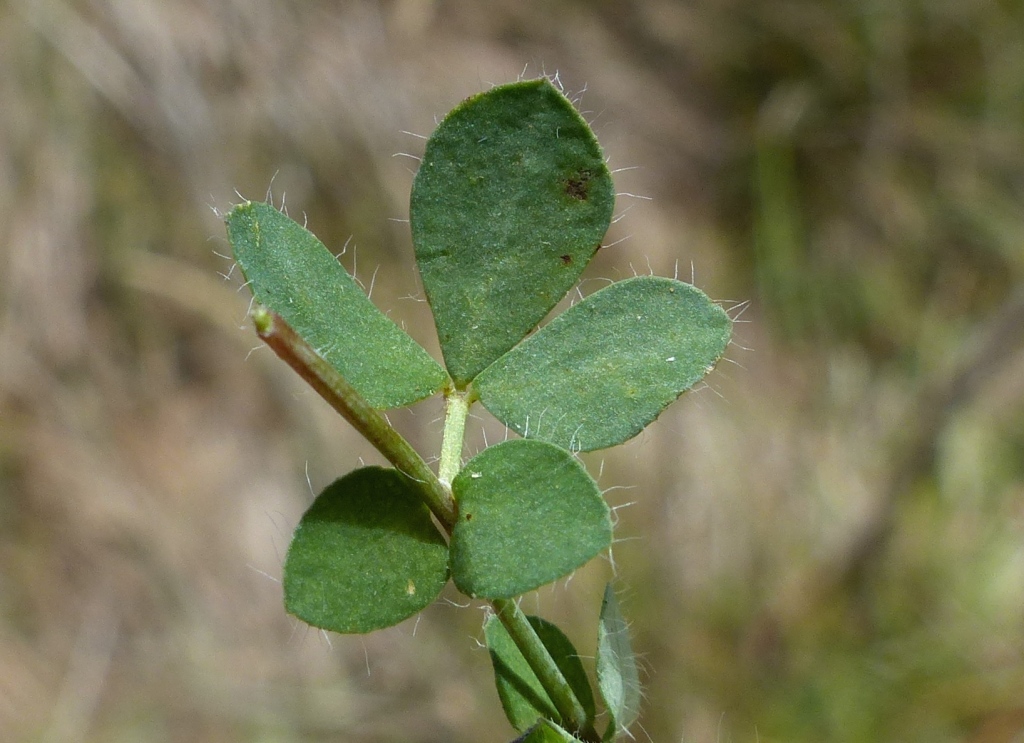Lotus
Annual or perennial herbs, rarely subshrubs. Leaves alternate, imparipinnate, sessile; leaflets usually 5, entire, upper 3 arranged towards apex of rachis, lower 2 often smaller, stipule-like, stem-clasping; stipules minute and deciduous or absent. Inflorescence axillary, capitate or umbellate, 1–many-flowered; peduncle usually longer than subtending leaves; bract trifoliolate, leafy; bracteoles usually absent. Flowers more or less sessile; calyx subcampanulate to bilabiate, teeth 5, equal or lowest ones longest; standard obovate to orbicular; wings obovate, auriculate; keel incurved, beaked, apex subacute, base swollen on each side; stamens usually diadelphous, rarely united in an open tube, filaments alternately long and short, anthers uniform; ovary sessile or subsessile, ovules many, style tapering, incurved, glabrous. Pod transversely septate, contorting on dehiscence; seeds 1–many, smooth (in Victoria), lacking a conspicuous aril.
Over 100 species, mainly in the Mediterranean region but also Eurasia, South Africa, North America, New Zealand; 10 species in Australia (2 endemic, 8 naturalized).
The 2 native species, Lotus australis and L. cruentus, are distinguished from the European Lotus species by their flower colour (never yellow) and non-dimorphic leaflets.
Jeanes, J.A. (1996). Fabaceae. In: Walsh, N.G.; Entwisle, T.J., Flora of Victoria Vol. 3, Dicotyledons Winteraceae to Myrtaceae, pp. 663–829. Inkata Press, Melbourne.
 Spinning
Spinning


